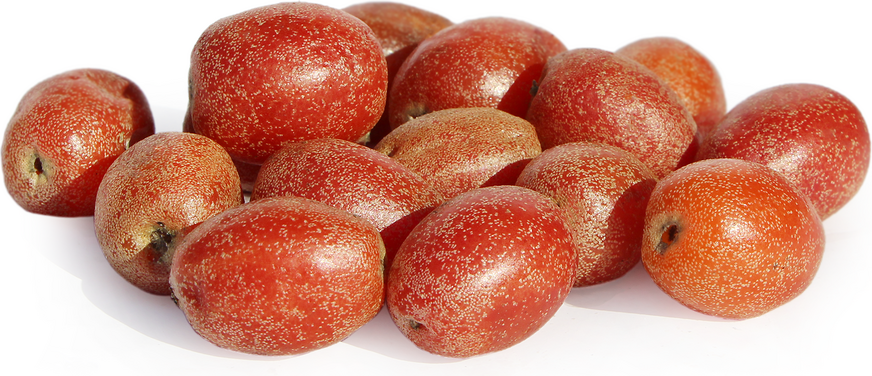


Silverberries
Estimated Inventory, ea : 0
Description/Taste
Silverberries are small fruits that resemble elongated olives. They grow on small shrubs and have smooth, burnt orange-colored skin covered in small white lenticels or pores. Beneath the thin skin of the Silverberry lies a very juicy inner flesh surrounding a center seed, with a flavor that can be rather tart or acidic. When Silverberries are perfectly ripe, the fruit can be much sweeter.
Seasons/Availability
Silverberries can be found growing year-round in tropical and sub-tropical climates with a peak season in the spring.
Current Facts
The Silverberry is botanically known as Elaeagnus conferta and is found growing throughout the tropical regions of Southeastern Asia and in parts of Africa. Silverberries are valuable fruits in their native tropical Asia, partly due to their early harvest date.
Applications
Silverberries are most often eaten fresh, with sugar or used to make a sweet beverage. The sour flavor of Silverberries is countered and complimented by the addition of sugar or other sweeteners. Silverberries can be used to make juice and syrups which can be added as a flavor for sodas. Silverberries can also be canned and preserved as jellies or jams.
Ethnic/Cultural Info
In Southeast Asia and India the fruits, as well as the leaves and roots of the Elaeagnus conferta are used for medicinal purposes to treat symptoms of indigestion and cough.
Geography/History
Silverberries are predominately found in their native areas of Southeastern Asian, in countries like India, China, and Vietnam. Also referred to as Bastard Oleaster (the botanical name for wild olives), these elongated fruits are in the same family as the more common olives.
Recipe Ideas
Recipes that include Silverberries. One
| Backyard Forager |
|
Silverberry Bread |
| The Cook's Cook |
|
Silverberry Fruit Leather |
| One Acre Farm |
|
Autumn Olive Jam |
| Backyard Forager |
|
Silverberry Meringue Pie |




